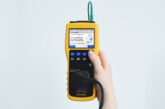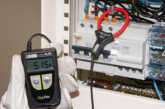
Steve Turnbull, Managing Director of Pure-PAT Electrical Testing, explains why the company has made a firm commitment to fire safety prevention by adopting higher levels of electrical appliance safety testing.
At Pure-PAT we’ve made a conscious management decision to adopt a higher level of safety testing beyond
the minimum levels of those advised by the IET Code of Practice. In my opinion, the minimum pass levels for insulation testing (currently at 1Mohm for class 1 appliances and 2Mohm for class 2 appliances) are far too low, especially when some modern-day PAT testers can record insulation tests in excess of 200Mohms as being the normally expected result of a well-insulated appliance.
Under the IET guidelines, if your PAT tester records an insulation reading of 1Mohm on a class 1 appliance then it’s
considered a ‘pass’ – if the normal reading is 200Mohms then I’d be very doubtful that the appliance was fit for use
and would suspect that it has some underlying fault.
You should also bear in mind that after a PAT Tester is calibrated it may still not be 100% accurate as there are allowable tolerances when calibrating, therefore by raising the minimum insulation limits from 1Mohm to 10Mohms it removes a certain level of doubt and will give everyone a greater sense of added protection since virtually every appliance should be able to record this level of IR as an absolute minimum.
Higher standards
I sincerely think that it’s time for the IR limits for passing appliances to be raised to a more realistic level and this is why we have voluntarily introduced a higher level within our company to ensure a greater degree of safety for our customers. It may result in more appliances failing the tests (though I’m not sure this will be a significant amount), but it will certainly ensure greater safety to our customers.

Essentially we want to be sure that every electrical appliance that we test and approve is at a much higher standard than the current minimal levels that have been adopted within our industry.
We’re all now aware that the recent Grenfell Tower fire tragedy was initially started by a fridge/freezer that caught fire and ‘exploded’. Full details of just how the fridge caught fire are still a matter of speculation, however most of our customers are very aware that the fire was started by an electrical appliance and will be looking for guidance from experts, such as ourselves. It’s been estimated that over 60,000 units of the same make and model of fridge/freezer were sold between 2006 and 2009, many of which were never registered with the manufacturer, so just how many are still in use today is anybody’s guess – we don’t even know how many are in businesses that have already been PAT tested.
If you look at the stats then instances of fridge/freezers causing fires in people’s homes and workplaces are prolific; so much so that the fridge/freezer tops the list of the most common white goods item to be involved in a fire.
What’s the cause?
In my experience the cause of a fire is nearly always the same: failure of an electric switch, controlling the defrost/freeze function, results in a small fire developing at the base on the back of the item. This quickly ignites the insulation materials around it (often polystyrene and plastic-based). The refrigerant gas may then become involved.
In fridge/freezers over three years old the refrigerant gas is Pentane, which is both a flammable and explosive gas, while in newer domestic models the refrigerant gas is most likely to be Propane – another volatile gas. Nowadays we’re seeing Propane increasingly used in commercial designated models.
A common indicator that a unit may be at risk from a fire is the malfunction of the defrost and freeze facilities. This will present itself in the form of the unit constantly freezing up or being unable to maintain a freezing temperature.
Proactive beyond the PAT test
As we test appliances for a living it’s important for us to be very mindful and proactive when testing appliances in
kitchen/utility areas.
The majority of appliances that catch fire due to inherent faults can’t necessarily be detected by simply carrying out a PAT test on them. When we carry out a PAT test on this type of appliance we’re looking for a good earth connection (below 0.2ohms) and also a good insulation reading (above 1Mohm) – we can’t necessarily detect a fault with any type of switch, thermostat or temperature control module within the appliance and these are the type of components which can overheat and cause fires.
With appliances such as tumble dryers a build-up of fluff within the dryer, combined with high heat temperature, can also cause a fire.
Warning signs
From experience, you should be suspicious if a customer informs you that their appliance is constantly tripping or
blowing fuses. Always make sure that power cords aren’t trapped under the feet of electrical appliances and if the rear of the appliance is covered in dust and fluff then you should suggest that it’s cleaned, as heat build-up on dust and fluff can be a potential fire hazard.
Although the fridge at Grenfell Tower wouldn’t require PAT testing (as it was owned by the resident) it’s highly possible that the PAT testing sector could come under more scrutiny in terms of how testing is carried out on appliances in the future. Many of our customers may well be under the assumption that once we’ve PAT tested their fridges then they’re 100% safe to use. Unfortunately this is not always the case!
As a responsible company we have to be seen to be more proactive when it comes to testing any appliance that uses electricity to produce hot or cold temperatures using a thermostat or other temperature control module, as these are in a higher risk category.
“Essentially we want to be sure that every electrical appliance that we test and approve is at a much higher standard than the current minimal levels that have been adopted within our industry.”
When testing these appliances you should look more carefully at the insulation reading of the appliance – if this is less than 10Mohms then it could be a clue that there may be an underlying fault which needs further investigation.
Recommend that the customer turns off the appliance and calls for a qualified service engineer to inspect the appliance further for a possible fault.
What’s a ‘failure’?
I’m of the opinion that our industry should adopt a firm policy that any appliance that’s considered a high risk and
produces an insulation reading of less than 10Mohms should be considered a failure from now onwards. This is not the official IET Code of Practice instruction, but I do believe that if we become more proactive and safety conscious in this area then it will help improve the professionalism and creditability of our trade, rather than competing with the silly ‘price cutters’ who are driving down the cost of PAT testing to levels that can’t possibly encourage safe testing.








